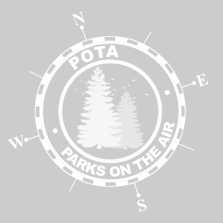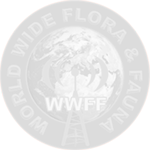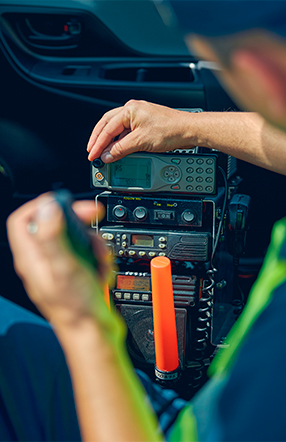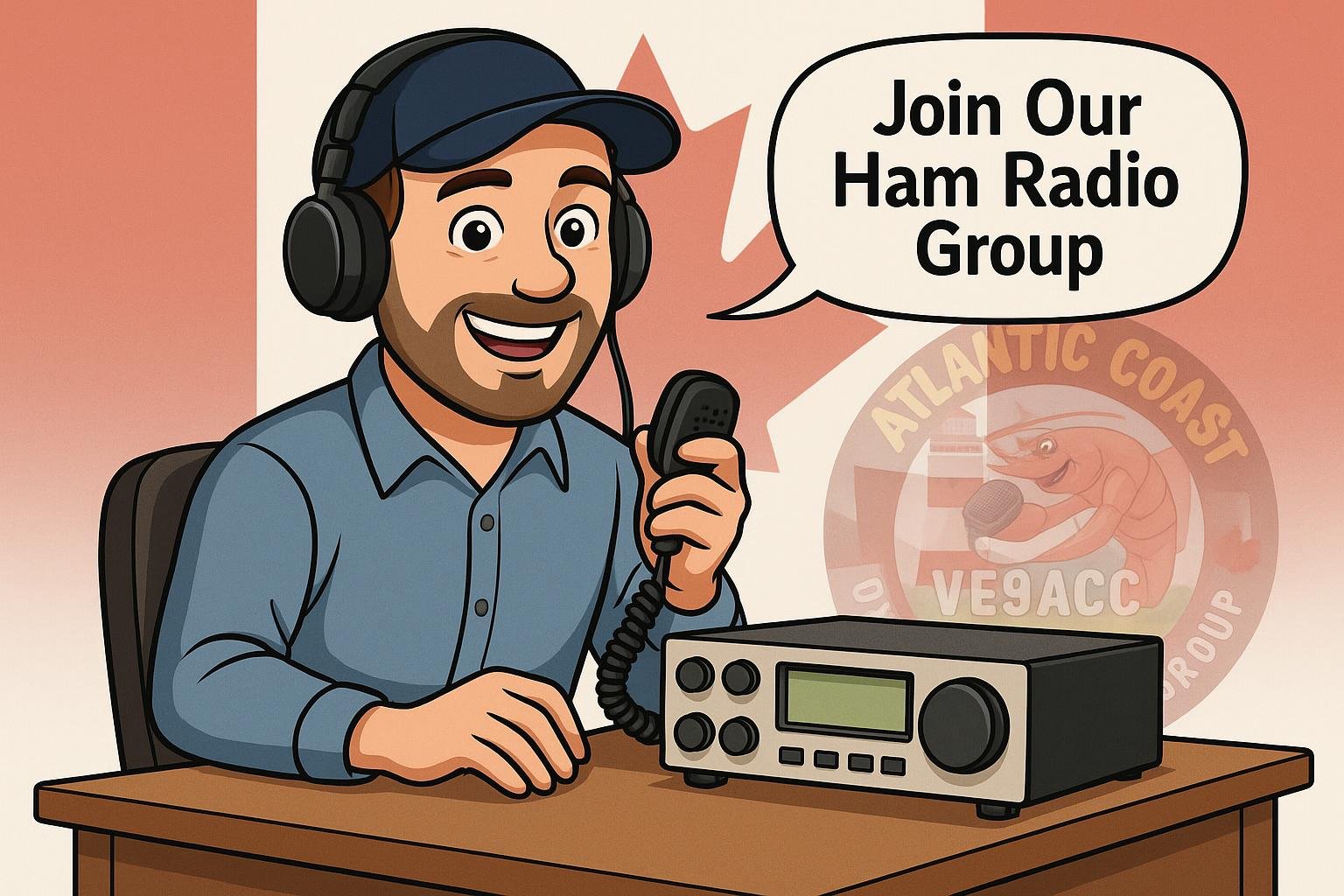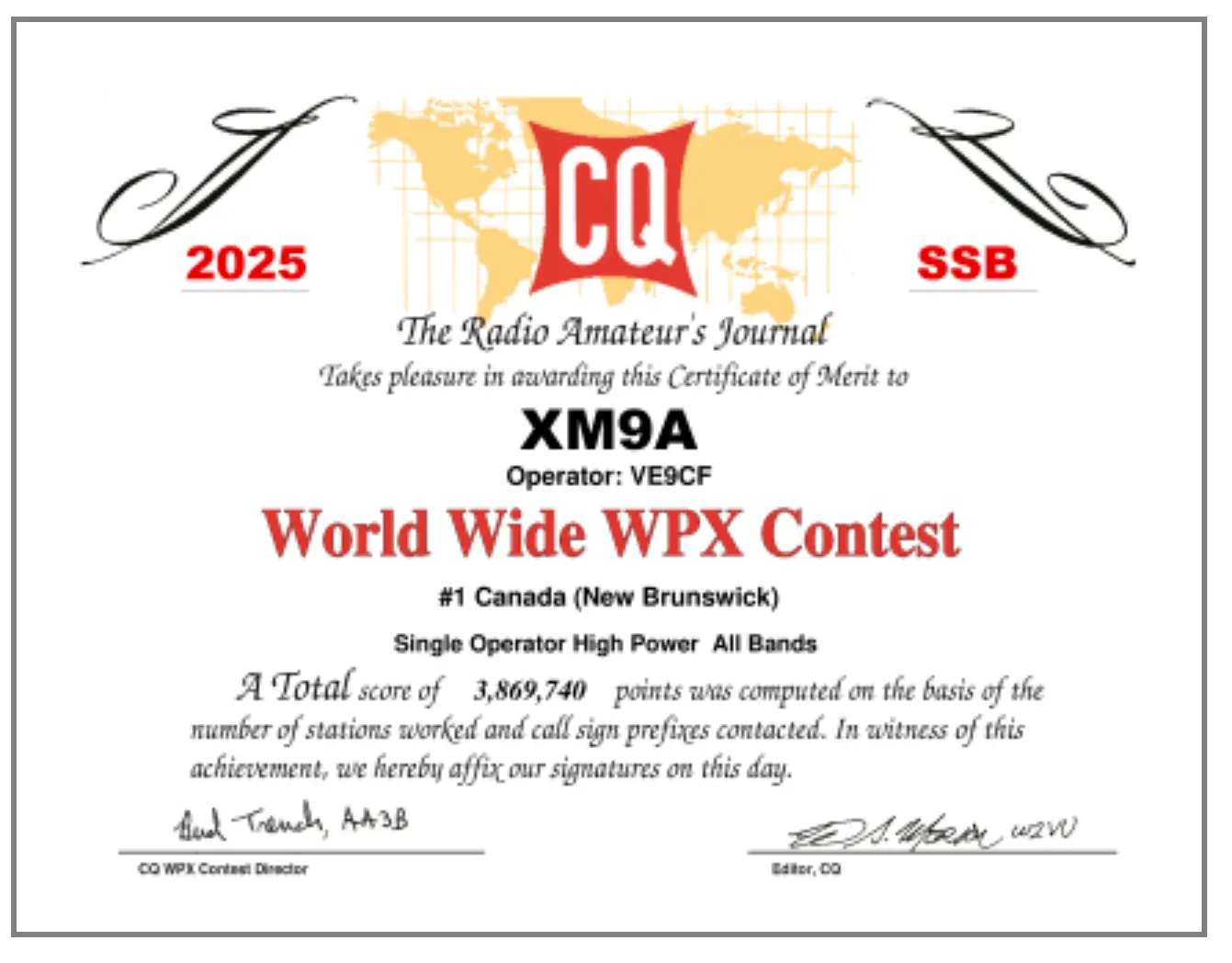Exploring Global Alternatives for Ham Radio Enthusiasts
World Wide Flora & Fauna (WWFF) offers a refreshing international approach for amateur radio enthusiasts seeking an alternative to US-led programs. This program encourages operators to venture beyond their radio shacks and connect with nature while enjoying their hobby. WWFF provides a global experience with stronger representation in Europe and other regions, making it an excellent choice for operators looking to expand their international connections beyond North American-centric activities.
Unlike some other park-based radio activities, WWFF emphasizes complete contact experiences and environmental appreciation. You'll be part of a community that values technical radio operation and conservation awareness. The program's structure encourages you to explore protected natural areas while developing portable operation skills.
As WWFF gains traction internationally, you'll benefit from participants' diverse perspectives and operating styles across multiple continents. This broader geographic scope creates opportunities for unique contacts and cultural exchanges that might be less common in predominantly US-focused programs.
Key Takeaways
- WWFF offers a more globally diverse amateur radio experience with stronger European and international representation than US-led alternatives.
- You'll develop radio skills and environmental appreciation through WWFF's focus on complete contacts in protected natural settings.
- The program provides unique community connections across multiple continents, enhancing your cultural and technical radio experiences.
Overview of World Wide Flora & Fauna in Amateur Radio
WWFF is an international amateur radio program that encourages operators to venture into protected natural areas while making radio contacts. This non-commercial initiative aims to raise awareness about conservation through ham radio activities.
Understanding the WWFF Program
The World Wide Flora & Fauna in Amateur Radio (WWFF) program encourages licensed ham radio operators to leave their homes and operate portable stations in protected natural areas. The primary mission is to raise awareness of the need to preserve natural parks, wildlife reserves, and other protected areas through radio communication.
Unlike contests focused solely on contact numbers, WWFF emphasizes appreciation of natural environments while operating. When participating in WWFF, you actively promote conservation awareness among the global amateur radio community.
WWFF is entirely non-commercial and internationally managed by national coordinators who oversee their respective country's Flora and Fauna programs. This structure ensures local expertise while maintaining global standards.
The programme uses a reference system to identify protected areas, making it easier to log and track activations. Participants can earn various awards by either activating reference areas or contacting activators.
Historical Evolution and Global Reach
WWFF evolved from earlier national programs focused on operating from natural reserves. It unified these separate initiatives into a cohesive global framework, maintaining consistent rules and recognition across borders.
The program has expanded significantly since its inception, now encompassing protected areas across dozens of countries on all continents. This international scope allows you to communicate with radio operators in diverse ecological regions worldwide.
Each participating country has a designated national program with a unique prefix. For example, Canadian operators would use the VEFF prefix when identifying reference areas. This standardized approach creates a unified system while preserving national identity within the broader WWFF community.
Social media and dedicated websites have helped WWFF grow by facilitating coordination between activators and hunters. The active Facebook community is a hub where participants can connect, share experiences, and plan activations.
Advantages of WWFF Over Other US-Led Programs
The World Wide Flora & Fauna program offers several distinct benefits that make it particularly appealing for amateur radio operators seeking alternatives to US-dominated radio activities. These advantages create a more inclusive, flexible, and culturally enriching experience while operating in natural environments.
International Collaboration and Diversity
WWFF provides a truly global platform with representation across multiple continents. Unlike US-centric programs, you'll find a diverse administrative structure with equal representation from participating countries rather than a hierarchical approach.
The program's international focus encourages cross-border collaborations and contacts, helping you develop relationships with operators worldwide. This diversity extends to the program's development, where input from various countries shapes the rules and guidelines.
You'll benefit from multilingual resources that make participation accessible regardless of your primary language. The award structure also celebrates global achievement rather than focusing primarily on US-based accomplishments.
The peer-to-peer governance model ensures that everyone's voice can be heard in the community regardless of where they live, creating a more equitable system for all participants.
Reduced Regulatory Hurdles
When participating in WWFF, you'll encounter fewer US-specific regulatory requirements that may not align with your country's amateur radio regulations. This creates a more streamlined experience for international operators.
The program's flexible approach to portable operations acknowledges different countries' regulations regarding natural areas. You won't need to navigate conflicting rules between US standards and local requirements.
Documentation and qualification processes are designed with international accessibility in mind. WWFF accepts various confirmation methods for contacts within multiple regulatory frameworks, unlike some US-led programs.
As the program isn't centred around one country's regulatory environment, you'll find more consistent cross-border recognition of accomplishments. This creates fewer bureaucratic obstacles when operating across national boundaries.
Enhanced Cultural Experiences
WWFF specifically encourages operators to immerse themselves in nature across diverse geographic regions, providing you with unique cultural contexts for your radio activities. This contrasts with US-led programs that may emphasize American parks and protected areas.
The program equally celebrates the distinctive natural heritage of each participating country. You'll gain an appreciation for conservation efforts worldwide rather than primarily focusing on US conservation frameworks.
When operating in different WWFF areas, you'll engage with local conservation stories and environmental priorities specific to each region. This creates a richer educational component to your radio activities.
The program's structure facilitates cross-cultural exchanges about environmental protection approaches across borders. You can share your cultural perspectives while gaining insights from operators in different ecological and cultural settings.
Program Structure and Operations
The World Wide Flora & Fauna program features a well-organized operational framework that balances simplicity with comprehensive participation opportunities. WWFF is a non-commercial international initiative coordinated by national programs from multiple countries.
Activator and Hunter Roles
Within WWFF, you have two primary participation pathways: Activator or Hunter. As an Activator, you set up your station in designated flora and fauna areas and make contacts from these natural locations. This role requires operating portable outside rather than from your home station, encouraging you to experience nature while enjoying radio operations.
On the other hand, Hunters contact Activators from their home stations or other locations. This dual-role system ensures inclusivity for all amateur radio operators regardless of mobility or equipment limitations.
The program specifically encourages making complete contacts, distinguishing it from other park-based radio activities that might prioritize quantity over quality. This focus on meaningful exchanges creates a more rewarding experience for both parties.
To qualify as an official WWFF activation, you must make at least 44 QSOs (contacts) over some time or all at once from the designated reference area within your operating session.
Award System and Recognition
WWFF offers a comprehensive awards system that recognizes both Activator and Hunter achievements. Your progress is tracked through a global reference numbering system for protected nature areas.
The basic award structure includes:
- Global Awards: Available to all participants worldwide
- Continental Awards: Specific to activities within geographic regions
- National Awards: Unique to each participating country's program
Each award has tiered levels, allowing you to progress from beginner to advanced participation stages. For Activators, recognition comes when you activate different reference areas, with special acknowledgment for accessing rare or challenging locations.
Unlike some commercialized programs, WWFF maintains its non-commercial ethos across all participating countries. This approach ensures that the focus remains on conservation awareness and radio operation rather than merchandise or profit.
Logging and Validation Procedures
WWFF implements straightforward yet effective logging and validation protocols. After completing your activation, you submit your logs to your national coordinator for verification before they're added to the global database.
Key logging requirements include:
- Date and time of each contact (UTC)
- Callsign of contacted station
- Band and mode used
- Signal reports exchanged
- WWFF reference of your location
The WWFF program simplifies this process by providing standardized log templates and electronic submission options. Many operators use specialized logging software that is compatible with WWFF requirements.
Validation occurs through national coordinators who verify that activations meet program standards. This decentralized approach allows for regional flexibility while maintaining consistent global standards.
All confirmed activities contribute to the collective WWFF database, creating a valuable record of amateur radio operations in protected natural areas worldwide. This system balances accessibility with adequate verification to maintain program integrity.
Environmental Awareness and Conservation
World Wide Flora & Fauna (WWFF) significantly emphasizes environmental stewardship while enjoying amateur radio activities. The program actively encourages operators to develop deeper connections with nature while pursuing their radio hobby.
Promoting Biodiversity
WWFF was founded with a core mission to draw attention to the importance of Protected Flora & Fauna areas globally. When you participate in WWFF activities, you're not just collecting contacts—you're helping to increase awareness of conservation efforts worldwide.
Activating these protected natural areas helps showcase their ecological importance to the amateur radio community. Many operators discover new parks and conservation zones they might otherwise never visit.
WWFF encourages you to research and learn about the ecological significance of each activation location. This educational component sets WWFF apart from other radio programs that may focus solely on making contacts without the environmental context.
Sustainable Operating Practices
WWFF promotes environmentally responsible practices during all radio activities. You're encouraged to operate with minimal environmental impact, using battery power or solar charging and leaving no trace at activation sites.
Contributing to conservation efforts is a fundamental aspect of WWFF participation. The program emphasizes respecting wildlife habitats and vegetation when setting up portable stations in protected areas.
Unlike some programs, WWFF encourages operators to immerse themselves fully in nature during activations. Many participants combine their radio operations with hiking, camping, and wildlife observation.
WWFF provides guidelines for sustainable operating, including proper waste management and avoiding sensitive ecological zones. Your participation helps demonstrate that amateur radio can coexist with and support environmental protection goals.
Technical Aspects of WWFF for Amateurs
WWFF operations involve specific technical considerations that optimize your portable radio experience in protected natural areas. These elements include frequency selection, equipment portability, and understanding how signals behave in wilderness environments.
Operating Modes and Frequencies
The WWFF program typically operates on HF bands, with 40m and 20m being particularly popular for park activations. These bands offer good propagation characteristics for local and DX contacts while remaining accessible to operators with modest equipment.
Most WWFF activators prefer SSB (single sideband) voice operations, typically using 7.144 MHz and 14.244 MHz as common calling frequencies. These have emerged as gathering points for WWFF enthusiasts worldwide.
CW (Morse code) is also popular among WWFF operators. It offers excellent weak signal performance, advantageous in remote park locations. Digital modes like FT8 have gained traction recently, allowing contacts even with minimal equipment and poor band conditions.
Unlike some programs with strict operating guidelines, WWFF embraces operational flexibility, permitting you to choose frequencies and modes that work best for your specific location and conditions.
Equipment Considerations
When planning your WWFF activation, portable and lightweight gear becomes essential. Many operators favour:
- QRP rigs: Low-power transmitters (5-10 watts) that balance power consumption with effectiveness
- Portable antennas: Wire dipoles, end-fed half-waves, or vertical systems that can be quickly deployed
- Battery power: LiFePO4 or other lightweight battery solutions providing sufficient capacity for 2-4 hour operations
Your antenna setup is particularly crucial for WWFF operations. Simple wire antennas suspended from trees often outperform complex systems while remaining lightweight and quick to deploy.
Equipment weatherproofing deserves special consideration as WWFF operations take place in natural environments. Waterproof covers, elevated operating positions, and equipment protection from environmental factors all contribute to successful activations.
Signal Propagation in Natural Environments
Natural environments present unique propagation characteristics that can enhance and challenge radio operations. Elevated locations within parks often provide excellent take-off angles for signals, improving long-distance communications.
Water features like lakes and oceans can significantly enhance your signal through reflection effects. This makes coastal or lakeside parks particularly attractive for WWFF activations.
Dense forests can attenuate signals, especially at higher frequencies. You may notice reduced performance when operating from heavily wooded areas than clearings or elevated positions.
WWFF's international nature makes understanding propagation paths essential. Unlike nationally focused programs, you'll be attempting contacts across oceans and continents, requiring knowledge of grey-line propagation, seasonal variations, and optimal timing for reaching specific regions.
Skills Development and Learning Opportunities
WWFF offers unique learning experiences that help operators grow their technical abilities and communication skills while operating in natural environments. The program creates distinct challenges that foster growth in ways traditional shack-based operations cannot.
Navigating Geographical Challenges
When you participate in WWFF activities, you'll quickly learn to adapt to diverse geographical settings. Unlike home-based operations, you must consider terrain, weather conditions, and accessibility issues that affect signal propagation.
Setting up portable stations requires you to become proficient with lightweight, efficient antenna systems. You'll develop practical skills in:
- Rapid deployment of field antennas
- Battery management for extended operations
- Terrain assessment for optimal signal paths
Operating from remote locations forces you to solve problems independently. When your antenna fails in a national park, there's no shop nearby—you must improvise.
The program's international focus exposes you to varied propagation conditions across different continents. This experience helps you understand how signals behave across mountains, coastlines, and forests.
Building Effective Communication Strategies
WWFF encourages you to develop enhanced communication techniques that work under challenging conditions. Field operations often involve marginal signals and natural interference, unlike controlled home environments.
Operating portable teaches you to:
| Listen more effectively | Optimize timing | Use efficient language |
|---|---|---|
| Distinguish weak signals from noise | Take advantage of band openings | Communicate essential information clearly |
| Identify DX stations in pileups | Recognize propagation patterns | Use standardized exchanges |
You'll become more adept at managing calling frequencies and handling "pile-ups" when multiple stations try to contact you simultaneously. This real-world practice builds confidence that carries over to contest operations.
The international nature of WWFF connections helps you navigate language differences and varying operating styles. You'll learn to communicate effectively with operators from diverse cultural backgrounds, making you a more versatile radio operator.
Community and Support Networks
WWFF offers robust connection opportunities through various platforms and gatherings where operators share experiences and technical knowledge. The program's international focus fosters diverse perspectives that enhance amateur radio practices.
Social Media and Online Forums
The WWFF community thrives through an active social media presence and dedicated online forums. Enthusiastic members share tips, arrange activation schedules, and celebrate achievements on platforms like Facebook groups and specialized ham radio forums.
WWFF's international structure ensures you can connect with operators from numerous countries, providing a global perspective that is lacking in more regionally focused programs. National coordinators maintain country-specific resources while contributing to the worldwide network.
When seeking assistance, you'll notice quick responses from experienced members who value the program's collaborative nature. Many operators maintain blogs documenting their WWFF adventures, creating valuable reference materials for newcomers and veterans.
Organized Events and Meetups
WWFF regularly hosts coordinated events that bring together operators across continents. These gatherings allow you to combine your passion for amateur radio with outdoor adventures in protected natural environments.
Unlike some programs, WWFF emphasizes immersion in nature while making complete contacts and creating meaningful on-air experiences. You'll find special award certificates for participation in these events, recognizing your contributions to the community.
European operators organize frequent activations, particularly during summer, with some events drawing dozens of participants to one location. These meetups provide excellent opportunities for skill development and equipment testing in field conditions.
The international approach means you'll encounter unique operating styles and techniques not commonly found in North American-centric activities, broadening your radio expertise and cultural understanding.
Accessibility and Inclusivity
The World Wide Flora & Fauna (WWFF) program stands out for its commitment to creating an amateur radio community that welcomes participants regardless of experience or background. The program emphasizes breaking down barriers to participation while actively encouraging younger generations to discover the joy of radio.
Programs for All Skill Levels
WWFF operates with an inclusive approach that accommodates radio operators of varying expertise. Unlike some US-led programs with complex rule structures, WWFF encourages operators to enjoy nature while making contacts without overwhelming technical requirements.
For beginners, the program offers a straightforward entry point:
- No minimum contact requirements to validate an activation
- Flexible operating times that accommodate different schedules
- Simple logging procedures that don't require specialized software
The qualification process is more accessible than many alternatives. The program values participation over competition, making it ideal for newcomers to portable operations or returning after a break.
Basic equipment is sufficient for successful participation, and experienced WWFF operators often mentor newcomers through dedicated Facebook groups and forums.
Encouraging Youth Participation
WWFF actively works to bring younger operators into the amateur radio community. The program's emphasis on outdoor activity and conservation resonates with environmentally conscious youth looking for meaningful hobbies.
Several WWFF national organizations offer:
- Youth-specific awards and certificates
- School-friendly activation opportunities
- Reduced or waived fees for young participants
The combination of technology and nature creates a compelling entry point for young people who might otherwise view amateur radio as outdated. You can introduce children or students to radio through "activator hunts," where they track operators in nearby parks.
WWFF's international character allows young operators to make global connections while developing technical skills. The program's non-commercial structure ensures that financial barriers remain low, making it accessible to young people with limited resources.
Challenges and Considerations
While WWFF offers compelling advantages for radio operators seeking alternatives to US-led programs, several practical hurdles require thoughtful navigation when participating in this global initiative.
Addressing Language Barriers
The international scope of WWFF creates natural communication challenges across language boundaries. You might encounter difficulties coordinating with activators and hunters from non-English speaking countries.
Online translation tools can help bridge these gaps, but misunderstandings still occur. Many WWFF websites and resources are published in multiple languages, though not all documentation is consistently translated.
Regional WWFF communities often develop informal translation networks. You could benefit from connecting with bilingual operators in your target region's language.
Some operators use standardized QSO formats and abbreviated codes to minimize language confusion during exchanges. These structured communications help ensure essential information is captured regardless of language proficiency.
Balancing Validity and Verification
The WWFF validation process differs from other programs, requiring 44 QSOs for a valid activation. This higher threshold ensures meaningful engagement but can be challenging to achieve in remote locations.
Evidence requirements vary between national WWFF organizations. You'll need to document your operations carefully, often including photos of your setup within the protected area as proof of legitimate activation.
Portable operations face verification challenges when operating in areas with poor cell coverage. Consider offline logging tools to timestamp and geotag your operation for later verification.
Weather and seasonal conditions may impact your ability to meet minimum QSO requirements. Planning activations during favourable conditions or popular operating hours increases your chances of successful verification.

